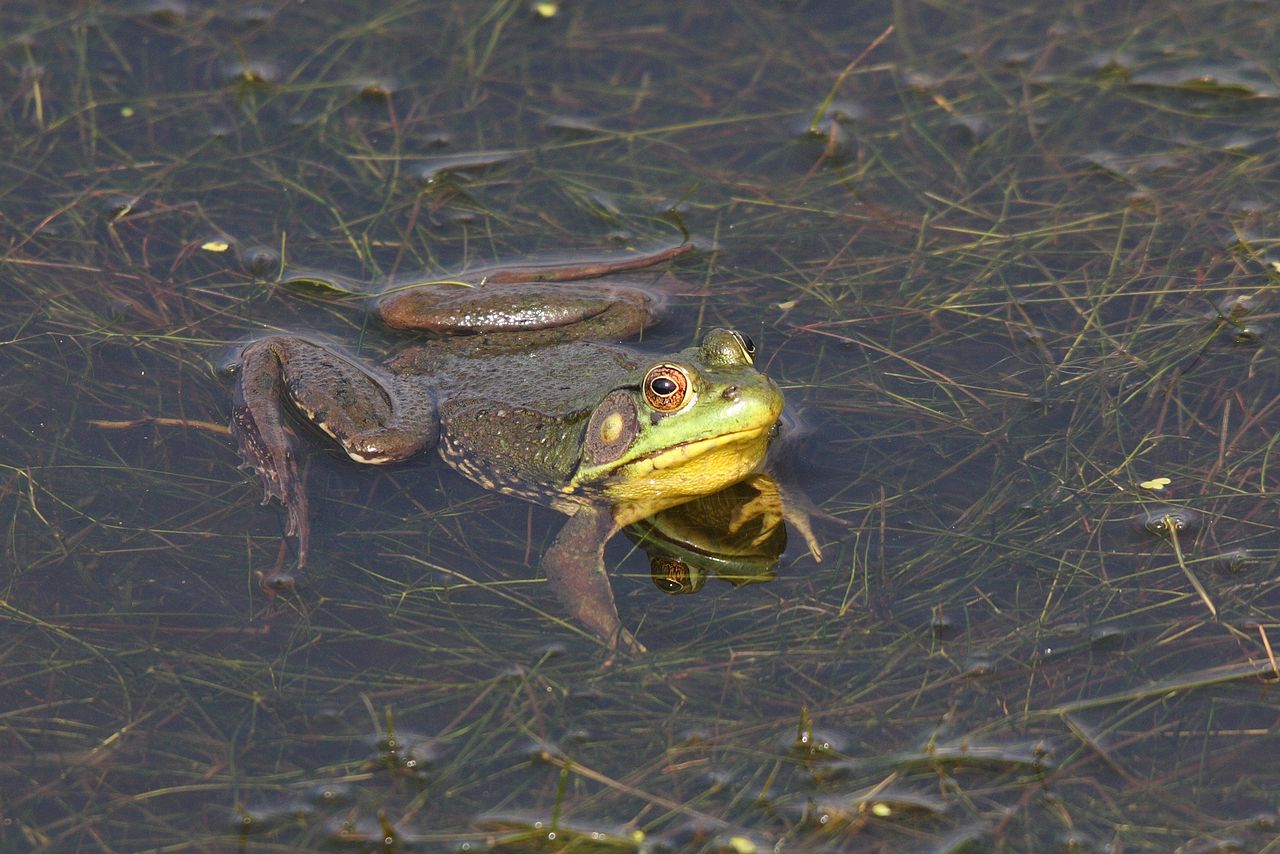Green Frog

Green Frog
(Lithobates clamitans)
Tags: Aquatic
Identification and Reproduction
Identification:
- Green frogs are recognized as being the classic pond frog.
- They are medium-sized, reaching up to 10 cm long.
- They have large tympanum or "ear drums" behind their eyes. These circular "ears" are large and can reach twice the diameter of their eyes.
- Hind legs are webbed.
- Although they resemble American bullfrogs, green frogs have distintly ridged dorsolateral folds, which is folded skin that runs along both sides of the frog's back.
- Male green frogs will develop a yellow throat.
- They have a loud distinct call which sounds like a banjo string or plucking a rubber band.
Reproduction:
- Green frogs will breed in permanent ponds in early summer.
- Male frogs are territorial during breeding season. They will call loudly to defend their territories.
- Females will lay eggs in a jelly-like mass that ranges from 15 to 30 cm wide. Egg masses can contain up to 5,000 eggs.
- Tadpoles will hatch after several days, are usually green, covered in small black dots and have a yellow belly.
- These frogs will reach sexual maturity after 2-3 years after full metamorphosis.
Habitat & Ecology
- They have a habit of sitting upright to rest on aquatic plants, most commonly lily pads.
- Both adults and tadpoles are strongly aquatic.
- They thrive in ponds and slow moving waterbodies that are filled with aquatic vegetation.
- Adult frogs typically spend most of the day close to the water's edge, where they can bask in sunlight and feed.
- In the winter they will hibernate by borrowing into the mud at the bottom of ponds.
Impacts
- Green frogs compete with native frogs for food and habitat.
- They have also been observed to feed on small fish and even other frogs.
Management
- Report any sightings to the Fraser Valley Conservancy, as they use this information to inform their conservation efforts for native species.
- Do not capture, possess, transport, distribute live green frogs anywhere in BC.
- Do not collect or move any tadpoles (regardless of species) or egg masses, and do not move frogs from one waterbody to another - this helps them spread.
Resources
Download the BC Frogwatch factsheet on the Green Frog here.
Download the Fraser Valley Conservancy's dichotomous key for Frogs and Toads of BC's South Coast here.
For more information and to hear the green frog's call check out the frogwatch's fact page on Green Frog here.
Header photo (Ryan Hodnett).




